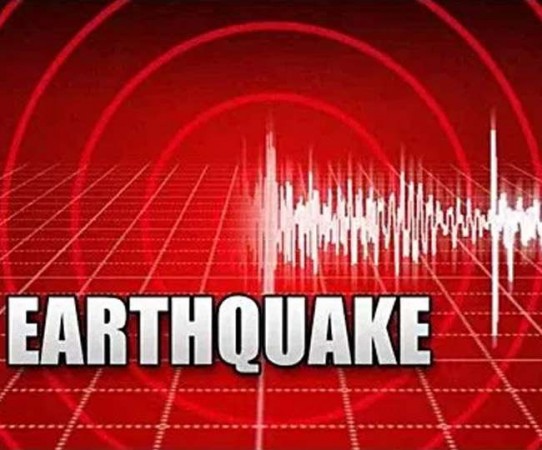
An earthquake with a magnitude of 3.3 shook Meghalaya's West Khasi Hills District early Monday, according to the National Centre for Seismology (NCS).
The quake's epicenter was pinpointed at a latitude of 25.60 N and a longitude of 91.31 E, with a depth of 5 kilometers. The NCS reported the event at 2:23 AM IST, stating, "EQ of M: 3.3, on: 10/06/2024 02:23:04 IST, Lat: 25.60 N, Long: 91.31 E, Depth: 5 Km, Location: West Khasi Hills, Meghalaya."
This follows a recent seismic event on May 14, when a 3.1 magnitude earthquake hit Meghalaya's West Jaintia Hills District. The epicenter of that quake was located at a latitude of 25.17 N and a longitude of 92.13 E, with a depth of 25 kilometers. The NCS recorded that event at 7:49 AM IST.
Luckily, no damage or injuries have been reported from either of these earthquakes.
Why Do Earthquakes Happen?
Earthquakes occur due to sudden movements within the Earth's crust. These movements release energy that has built up over time, causing the ground to shake. The main causes of earthquakes are the activities associated with tectonic plates, volcanic activity, and human-induced events.
Tectonic Plate Movements
The Earth's outer shell, known as the lithosphere, is divided into several large and small pieces called tectonic plates. These plates float on the semi-fluid asthenosphere beneath them. The movement of these plates can cause earthquakes in three primary ways:
Convergent Boundaries: Where two plates move towards each other, one plate may be forced beneath the other in a process known as subduction. This can cause intense seismic activity.
Divergent Boundaries: Where two plates move apart from each other, magma from the mantle can rise to fill the gap, causing earthquakes.
Transform Boundaries: Where two plates slide past each other horizontally, the friction and stress from this movement can trigger earthquakes.
Fault Lines
Most earthquakes occur along fault lines, which are fractures in the Earth's crust where blocks of rock have moved past each other. The most famous fault line is the San Andreas Fault in California, known for its significant earthquake activity.
Volcanic Activity
Volcanoes can also cause earthquakes. As magma rises through the Earth's crust, it can create pressure and cause the surrounding rock to crack, leading to seismic activity. These earthquakes often occur before or during volcanic eruptions.
Human Activities
Certain human activities can induce earthquakes, such as:
Mining: Removing large volumes of rock can destabilize the ground.
Reservoir-Induced Seismicity: The filling of large reservoirs behind dams can cause seismic activity due to the added weight and water infiltration into the ground.
Fracking: Hydraulic fracturing for oil and gas can induce small earthquakes by injecting high-pressure fluid into rock formations.
Measuring Earthquakes
Earthquakes are measured using a seismograph, which records the intensity and duration of the seismic waves. The magnitude of an earthquake is commonly reported using the Richter scale or the moment magnitude scale (Mw), which provide a measure of the energy released by the earthquake.
Heavy Rains Lash Thane and Palghar Districts Overnight